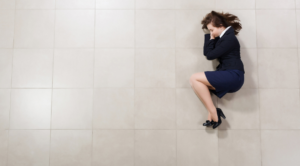Have you ever considered the benefits of sleeping on the floor? As someone who values wellness, I’ve delved into the intriguing debate surrounding this unconventional sleeping habit. Many cultures have embraced floor sleeping for centuries, touting its potential health advantages. In this article, I’ll explore the question: Is it healthy to sleep on the floor?
Is It Healthy to Sleep on the Floor
Historical and Cultural Perspectives
 In examining the tradition of sleeping on the floor, I discover a practice deeply rooted in various cultures across the globe. From the Japanese tatami mats to the minimalistic approach of Scandinavian design, the act of sleeping on the floor has a rich historical tapestry. It’s intriguing to note how these cultural practices prioritize simplicity and ergonomic benefits, offering a unique insight into alternative sleeping habits that have stood the test of time.
In examining the tradition of sleeping on the floor, I discover a practice deeply rooted in various cultures across the globe. From the Japanese tatami mats to the minimalistic approach of Scandinavian design, the act of sleeping on the floor has a rich historical tapestry. It’s intriguing to note how these cultural practices prioritize simplicity and ergonomic benefits, offering a unique insight into alternative sleeping habits that have stood the test of time.
Modern Health Claims and Skepticism
As I delve into the modern-day discourse on floor sleeping, it’s evident that proponents tout numerous health benefits associated with this practice. Improved posture, better spinal alignment, and potential relief for certain back issues are among the claims made by advocates of sleeping on the floor.
Benefits of Sleeping on the Floor
Improved Posture and Back Health
Strengthening my core muscles from sleeping on the floor has noticeably enhanced my posture over time. The firm surface promotes proper spinal alignment, reducing strain on my back muscles. It’s amazing how something as simple as switching to floor sleeping can have such positive effects on my overall back health. By aligning my spine correctly, I’ve also experienced a decrease in lower back pain, which has been a significant relief.
Potentially Deeper Sleep
 I’ve found that sleeping on the floor has improved the quality of my sleep, allowing me to experience deeper and more restful nights. The firm support provided by the floor helps distribute my body weight evenly, minimizing pressure points that can disrupt sleep. This has led to me waking up feeling more refreshed and energized in the morning. The consistent support from the floor has also helped reduce tossing and turning during the night, contributing to a more uninterrupted sleep cycle.
I’ve found that sleeping on the floor has improved the quality of my sleep, allowing me to experience deeper and more restful nights. The firm support provided by the floor helps distribute my body weight evenly, minimizing pressure points that can disrupt sleep. This has led to me waking up feeling more refreshed and energized in the morning. The consistent support from the floor has also helped reduce tossing and turning during the night, contributing to a more uninterrupted sleep cycle.
Potential Drawbacks of Floor Sleeping
Hard Surfaces and Body Pain
Sleeping on the floor often means resting on hard surfaces like wooden floors or thin mats. While some individuals may find this supportive for their back, others might experience increased body pain, especially in sensitive areas like hips and shoulders. The lack of cushioning can lead to discomfort and pressure points, potentially causing stiffness and soreness upon waking.
Issues with Cold and Cleanliness
One common concern with floor sleeping is the exposure to cold temperatures, particularly in colder climates or seasons. Contact with the cold floor can make it challenging to maintain optimal body warmth, leading to discomfort and difficulty falling asleep. Additionally, sleeping directly on the floor can raise issues of cleanliness, as floors may accumulate dust, debris, or allergens that could affect sleep quality and respiratory health.
When to Consider Sleeping on the Floor
Specific Health Conditions That May Benefit
 When dealing with specific health conditions such as chronic back pain or alignment issues, sleeping on the floor could be beneficial. Conditions like sciatica or lordosis can often find relief from the firm support provided by a solid surface. While it’s essential to consult with a healthcare professional before considering this option, some individuals with these conditions have reported reduced discomfort and improved sleep quality when sleeping on the floor.
When dealing with specific health conditions such as chronic back pain or alignment issues, sleeping on the floor could be beneficial. Conditions like sciatica or lordosis can often find relief from the firm support provided by a solid surface. While it’s essential to consult with a healthcare professional before considering this option, some individuals with these conditions have reported reduced discomfort and improved sleep quality when sleeping on the floor.
Situations Where Floor Sleeping Is Unavoidable
In certain situations, floor sleeping may be unavoidable, such as during travel, camping, or in spaces with limited bedding options. When faced with these circumstances, adapting to sleeping on the floor can become a necessity rather than a choice. While it may not be the most comfortable option, making the best of the situation by using extra padding or blankets can help improve one’s rest in these temporary settings.

